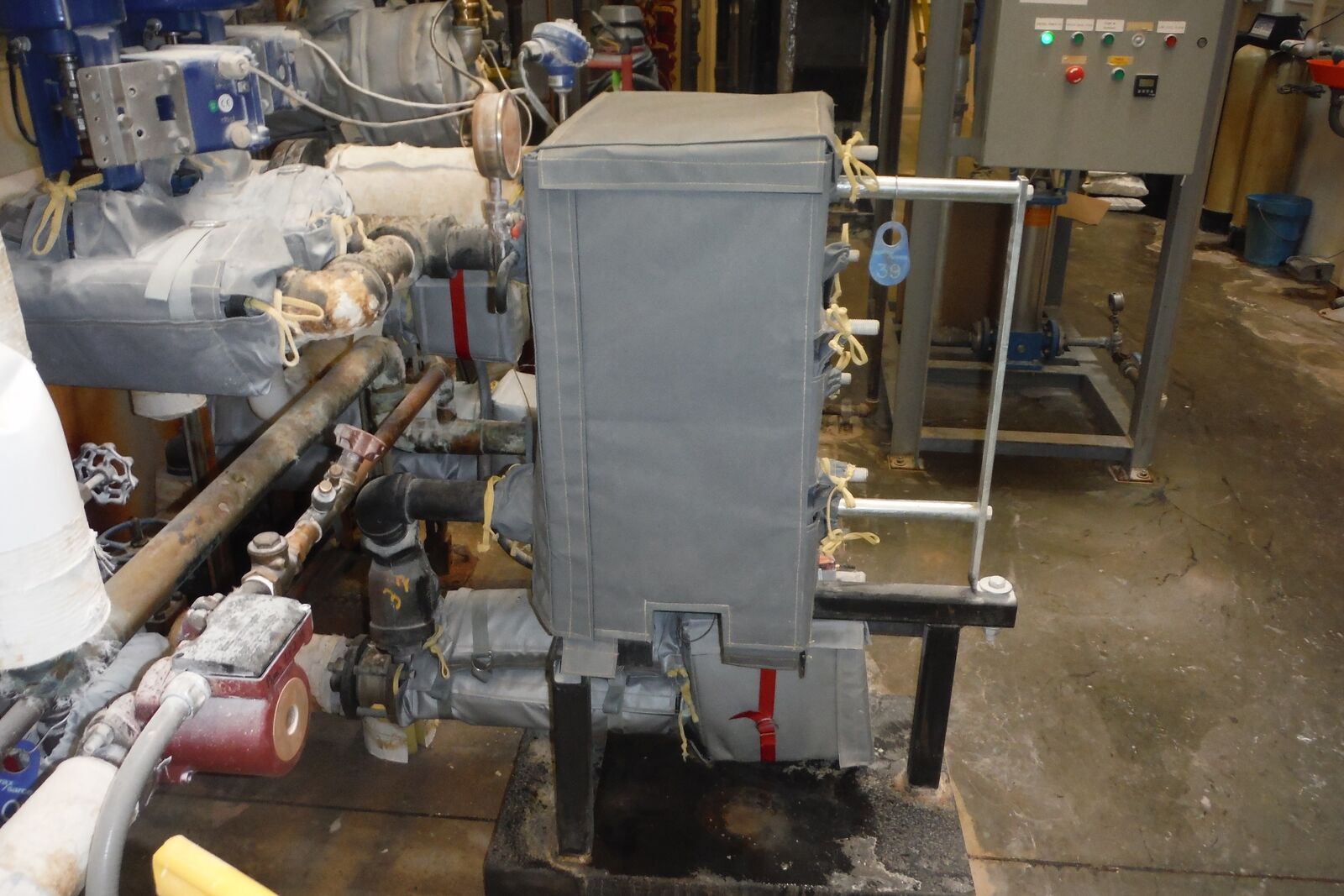In industrial settings, efficient heat transfer is crucial for various processes, including heating, cooling, condensation, and evaporation. One type of equipment that has gained widespread popularity for its exceptional performance and versatility is the plate and frame heat exchanger. This article explores the numerous benefits of plate and frame heat exchanger in industrial settings.

Compact Design and Space Savings
Compact design and space savings are crucial advantages of plate and frame heat exchangers, making them an ideal choice for various industrial and commercial applications. These heat exchangers consist of multiple thin plates arranged in a frame, creating a large surface area for heat transfer within a minimal footprint. The design’s efficiency allows for high thermal performance in a significantly reduced space compared to traditional shell and tube heat exchangers.
The compact nature of plate and frame heat exchangers is particularly beneficial in environments where space is limited, such as in urban buildings, ships, and small-scale industrial plants. This space efficiency translates to lower installation costs, easier maintenance, and greater flexibility in equipment layout. Additionally, their modular design facilitates scalability and customization, enabling precise adjustments to meet specific process requirements. Overall, the compact design and space-saving features of plate and frame heat exchangers provide significant operational and economic benefits, driving their widespread adoption in various sectors.
High Thermal Efficiency
High thermal efficiency is a crucial attribute in many heating and cooling systems, notably in plate and frame heat exchangers. This efficiency refers to the ability of a system to transfer heat from one fluid to another with minimal energy loss. Plate and frame heat exchangers achieve high thermal efficiency through their unique design, which features multiple thin, corrugated plates stacked together. These plates create large surface areas for heat transfer while maintaining a compact footprint. The narrow gaps between the plates ensure that the fluids flow in thin layers, enhancing heat transfer rates due to increased turbulence. Additionally, the counterflow arrangement, where fluids flow in opposite directions, maximizes the temperature gradient across the plates. This design not only boosts heat transfer efficiency but also reduces the energy required to achieve the desired temperature change, leading to cost savings and improved system performance in various industrial applications.

Easy Maintenance and Cleaning
Maintaining and cleaning plate and frame heat exchangers is straightforward, making them a preferred choice for many industries. Their design allows for easy disassembly, giving direct access to all components. This accessibility simplifies routine inspections and cleaning processes, ensuring optimal performance and longevity.
To maintain a plate and frame heat exchanger, regular checks for leaks, pressure drops, and temperature variances are essential. These indicators can signal the need for cleaning or minor repairs. Cleaning is typically done by removing the plates and washing them with appropriate cleaning agents to remove any buildup of scale, fouling, or other residues.
Additionally, advanced cleaning techniques, such as Cleaning-In-Place (CIP) systems, can be employed. CIP systems allow for thorough cleaning without disassembling the equipment, minimizing downtime and labor costs. Regular maintenance and cleaning not only enhance efficiency but also prevent potential breakdowns, ensuring the heat exchanger operates at peak performance.
Versatility and Flexibility
Plate and frame heat exchangers are celebrated for their versatility and flexibility, making them an ideal solution for a wide range of industrial applications. Their modular design allows for easy customization, enabling users to adjust the number of plates to meet specific thermal requirements. This adaptability is particularly advantageous in processes where operational conditions may change over time, ensuring consistent performance without the need for complete system overhauls.
The compact nature of plate and frame heat exchangers also enhances their flexibility, as they can be easily integrated into existing systems without requiring significant space or infrastructure modifications. This makes them suitable for use in diverse industries, from HVAC and refrigeration to chemical processing and food and beverage production. Additionally, their ability to handle varying temperatures and pressures with high efficiency further underscores their versatility, providing reliable heat transfer solutions across a multitude of applications. With these benefits, plate and frame heat exchangers offer a robust and adaptable solution for modern thermal management needs.
Enhanced Heat Transfer Rates
Enhanced heat transfer rates are crucial in optimizing the efficiency of thermal systems, particularly in industries such as power generation, HVAC, and chemical processing. By improving the rate at which heat is transferred between media, systems can operate more effectively, reducing energy consumption and operational costs. Several methods can be employed to enhance heat transfer rates. These include the use of advanced materials with superior thermal conductivity, implementation of innovative design modifications such as finned surfaces or turbulence-inducing features, and the application of nanofluids with higher thermal properties.
Plate and frame heat exchangers, for instance, leverage these enhancements by incorporating corrugated plates that create turbulent flow, significantly boosting heat transfer rates. This not only ensures more efficient thermal management but also allows for compact and cost-effective designs. Ultimately, enhancing heat transfer rates is a key factor in achieving sustainable and efficient industrial processes, contributing to energy conservation and environmental protection.

Reduced Fouling and Scaling
Reduced fouling and scaling are critical benefits of using plate and frame heat exchangers, especially in industrial applications. Fouling occurs when impurities in the fluids accumulate on heat transfer surfaces, reducing efficiency. Scaling is a specific type of fouling caused by the deposition of minerals, such as calcium carbonate, which can significantly hinder performance.
Plate and frame heat exchangers are designed to minimize these issues through their unique construction. The plates create high turbulence as the fluids pass through narrow channels. This turbulence reduces the likelihood of particles settling and adhering to the surfaces, effectively mitigating fouling. Additionally, the modular nature of plate and frame heat exchangers makes them easier to clean and maintain. Plates can be easily removed, cleaned, and reassembled, ensuring that any buildup of scale is promptly addressed.
Overall, reduced fouling and scaling lead to more efficient heat transfer, lower maintenance costs, and extended equipment lifespan, making plate and frame heat exchangers a reliable choice for many applications.
Cost-Effectiveness
Plate and frame heat exchangers (PFHEs) are renowned for their cost-effectiveness, making them a preferred choice in various industries. Their design, which consists of multiple thin plates pressed together, maximizes heat transfer efficiency while minimizing material usage. This results in a compact, lightweight unit that requires less space and structural support compared to other types of heat exchangers, such as shell and tube models.
The high heat transfer efficiency of PFHEs leads to significant energy savings, reducing operational costs. Additionally, their modular design allows for easy maintenance and cleaning, which minimizes downtime and maintenance expenses. The ability to add or remove plates offers flexibility, accommodating changes in process requirements without the need for a complete system overhaul.
Furthermore, the initial investment in a PFHE is often lower due to its straightforward construction and reduced material costs. Overall, the combination of lower upfront costs, energy savings, and reduced maintenance expenses makes plate and frame heat exchangers a highly cost-effective solution for thermal management.

Conclusion
Plate and frame heat exchanger offer numerous advantages in industrial settings, making them a preferred choice for various applications. Their compact design, high thermal efficiency, easy maintenance and cleaning, versatility, enhanced heat transfer rates, reduced fouling and scaling, and cost-effectiveness make them an attractive option for industries seeking efficient and reliable heat transfer solutions. By incorporating plate and frame heat exchangers into their processes, industrial facilities can optimize their operations, reduce energy consumption, and achieve sustainable and cost-effective heat transfer solutions.











